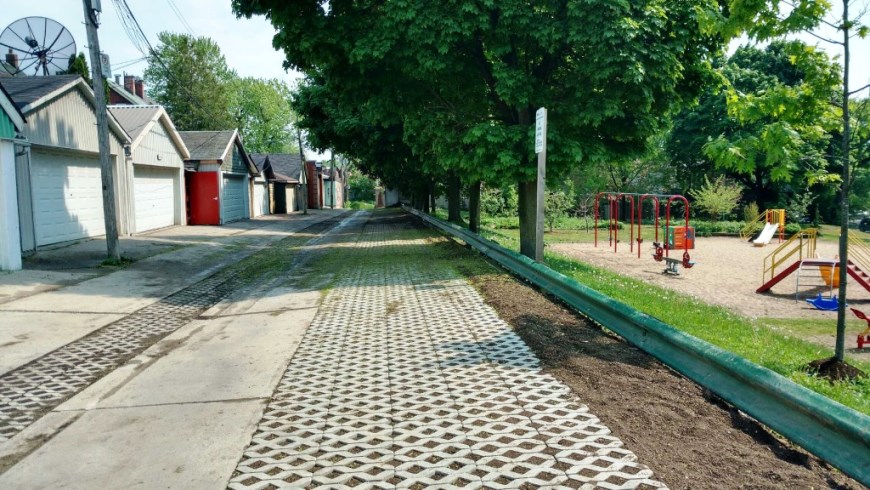The city of Toronto, Ontario, Canada has more than 2,400 publicly owned laneways. These back alleys, that run throughout the city, behind our streets, connecting our residential and commercial neighbourhoods, are an integral part of the urban landscape.
If all 2,400 laneways were put together, they would take up around over 100 hectares of space, equal to about two-thirds the size of Toronto’s High Park. Now, imagine if the rainwater falling on these surfaces throughout the year could pass through permeable paving back into the earth, reducing localized flooding, recharging groundwater and saving taxpayer money that would otherwise be spent treating stormwater.
This past summer, the City of Toronto got its first two experimental green laneways, which aim to do just this. The Laneway Puncture Demonstration Project was a community-centerd project that took place in two laneways.
“Laneway Punctures” are strategic incisions along the central drainage channels of the laneway, which are repaved with open-celled pavers and planted with hardy plant material. In addition to increasing ground permeability and diverting storm water from the municipal sewage system, the native plants also beautify the landscape and enhance biodiversity.
Photo of green laneway, allowing stormwater filtration in Toronto, by Michelle Senayah.

